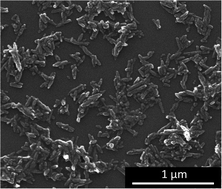Freeze-dried cationic calcium phosphatenanorods as versatile carriers of nucleic acids (DNA, siRNA)
Abstract
Functionalized

* Corresponding authors
a
Inorganic Chemistry and Center for Nanointegration Duisburg-Essen (CeNIDE), University of Duisburg-Essen, Universitaetsstr. 5-7, Essen, Germany
E-mail:
matthias.epple@uni-due.de
Fax: +49 201 1832621
Tel: +49 201 2402
Functionalized

 Please wait while we load your content...
Something went wrong. Try again?
Please wait while we load your content...
Something went wrong. Try again?
J. Klesing, S. Chernousova and M. Epple, J. Mater. Chem., 2012, 22, 199 DOI: 10.1039/C1JM13502C
To request permission to reproduce material from this article, please go to the Copyright Clearance Center request page.
If you are an author contributing to an RSC publication, you do not need to request permission provided correct acknowledgement is given.
If you are the author of this article, you do not need to request permission to reproduce figures and diagrams provided correct acknowledgement is given. If you want to reproduce the whole article in a third-party publication (excluding your thesis/dissertation for which permission is not required) please go to the Copyright Clearance Center request page.
Read more about how to correctly acknowledge RSC content.
 Fetching data from CrossRef.
Fetching data from CrossRef.
This may take some time to load.
Loading related content
